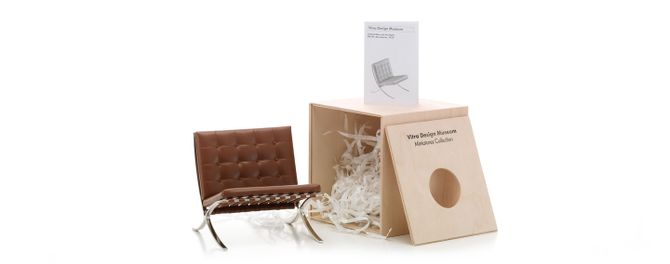
Miniatures Collection - MR 90 Barcelona
Mies van der Rohe, 1929
Miniatures Collection
Da oltre due decenni il Vitra Design Museum realizza repliche in miniatura dei pezzi più importanti della propria collezione di mobili di design. La Miniatures Collection riassume l'intera storia del mobile industriale di design, spaziando da Storicismo e Art Nouveau a Bauhaus e Nuova Oggettività, da Radical Design e Postmodernismo fino ai giorni nostri. Misuranti esattamente un sesto rispetto alle dimensioni degli storici originali, le sedie sono tutte perfettamente in scala e ricreano con precisione i più minuscoli dettagli di costruzione, materiale e colore. Gli elevati standard di autenticità comprendono addirittura le venature naturali del legno, la riproduzione delle viti e la replica delle elaborate tecniche artigianali. Tutto questo ha reso le miniature apprezzati oggetti per collezionisti e ottimi strumenti didattici per università, scuole di design e studi di architetti.